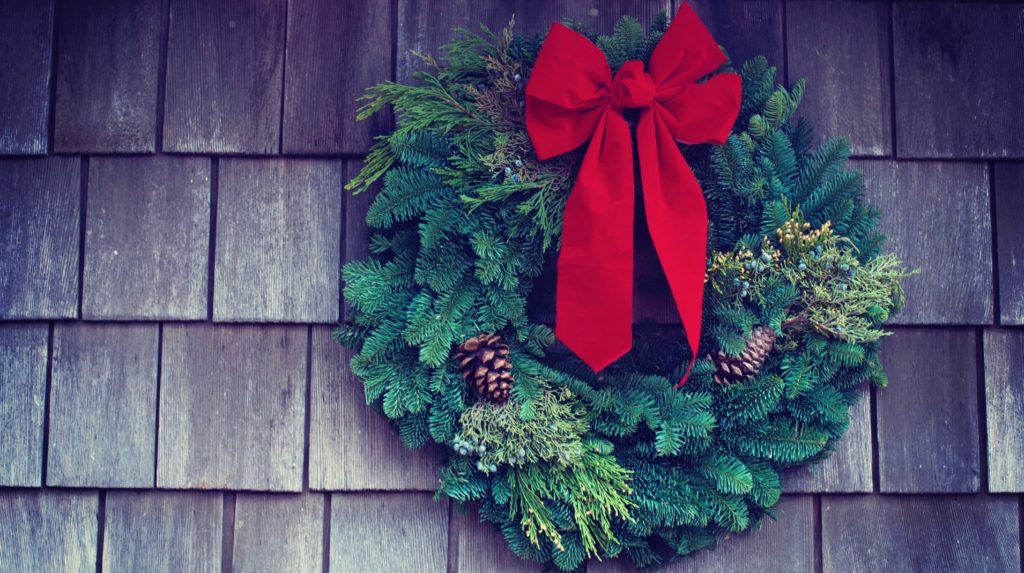As it’s the season to be jolly, here’s a little gift from Wildflower Ceremonies to you – a few things you might not have known about we hang wreaths at Christmas and Yuletide. Number 10 is our FAVOURITE – do NOT try this at home!
1. The word ‘wreath’ has its roots in the old English word ‘writhen’, which means to twist.
2. The circle has been held as a sacred symbol of eternity since before time began. Today, we can see the symbolic nature of circles everywhere; from the mathematical beauty of the universe, to wedding rings, to the Olympics logo, to the shape of our own planet – the list is endless.
3. For the ancient druids, holly was also revered as sacred – a magical plant that never seemed to die no matter how cold the frost or deep the snow; its red berries a burst of colour on the winter landscape, a symbol of the life-blood of the land.
4. Wreaths were a common symbol of success in ancient Rome – not only did Julius Caesar rock his laurels, but wreaths of flowers were hung on doors to celebrate victories.
5. After the Romans had conquered Britain, history suggests the powerful symbols of the holly and the wreath were combined, so that holly wreaths were given as gifts to wish good luck and prosperity on a friend’s hearth and home.
6. After the Romans adopted Christianity in 313 AD, the prickly texture of holly leaves came to symbolise the crown of thorns worn by Jesus on the cross. The evergreen nature of holly represented the eternal flow of Jesus’s love, and many Christians today hang the holly wreath upon their doors to invite the spirit of Jesus into their homes.
7. Christmas wreaths may also have started among the Germanic and Scandinavian peoples as a nifty upcycling trick. Back in the day, people would cut down their own trees from the wild and prune them at home. The leftover branches would not have gone to waste, instead, they were woven into wreaths, says author Ace Collins.
8. In 1839, a Lutherian Priest – Johann Hinrich Wichern – used a wreath made out of an old wagon wheel to teach children in Germany about the meaning and purpose of Christmas. He realised the wreath could also be used to help the youngsters countdown to Christmas – et voila – the advent wreath was born!
9. A wreath made of evergreens has long been associated with Yuletide. Yuletide has its roots in Viking customs, and included the marking of the Winter Solstice. At the Winter Solstice, in the Northern Hemisphere, the sun is set at its lowest point in the sky, and appears to ‘freeze’ for three days. After this, the sun begins to rise higher, hailing the turning point of the year as we move towards spring. And so, it’s believed evergreen wreaths were woven in the shape of the sun, to symbolise the eternal nature of the cycle of life, and to celebrate the sun’s return…
10. And this is the BEST bit … it’s thought that Viking communities would also have made a giant wreath in the circular shape of the sun, and then set it on fire, rolling it down a hillside to symbolise the sun’s journey across the sky! Absolutely epic – just please don’t do that to one of Jay’s – they are truly works of art, not to mention the health and safety implications…
So there you have it; whatever your culture or spiritual path, hanging a wreath on the door at this time of the season is an invitation for good luck and prosperity to visit your home.
Hope you’re having a wonderful jollytide, one and all!

